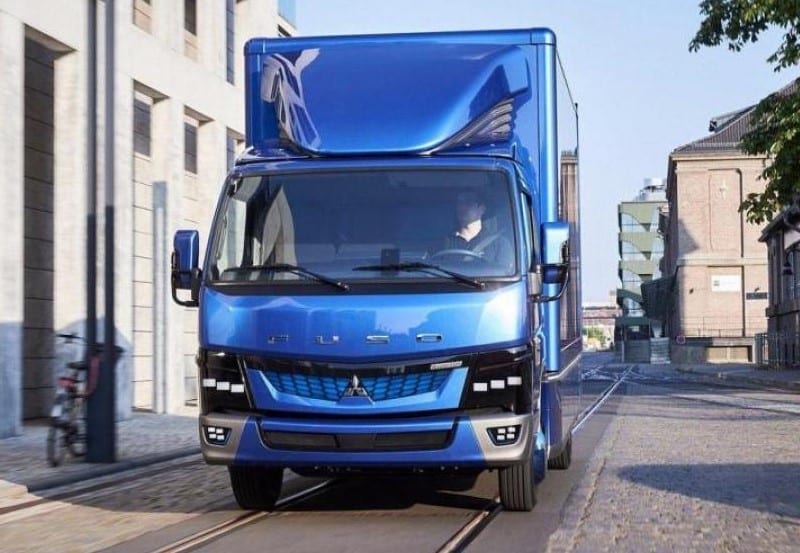More and more people are making purchases online and expecting deliveries right to their door. This change in the way goods are bought and delivered could be a boon to medium-duty commercial battery electric vehicles.
You’d have to be living under a rock not to be aware of the shift in retail purchasing that has freight being delivered directly from warehouses to consumers, bypassing the intermediate steps involved with getting the product to retail outlets. The end result is smaller orders delivered more frequently. That means an increase in local delivery trucks to meet customer demand.
The way goods are bought and delivered could be a boon to medium-duty commercial battery electric vehicles.
Significant E-commerce Growth Expected
Today, e-commerce accounts for about 10% of retail sales, and is expected to continue to grow. The demographics of the e-commerce market place are quite interesting. According to a National Technology Readiness Survey, 55% of online purchases are made by people between 25 and 44 years old. In addition, these consumers tend to be concentrated in urban areas.
A McKinsey study found that nearly 25% of consumers said they are willing to pay premiums for same day or instant delivery. According to McKinsey, “Same-day and instant delivery will likely reach a combined share of 20% to 25% of the market by 2025, and they are likely to grow significantly further, especially if the service is extended to cover rural areas to some extent.”
If these prognostications are correct, there will be a significant shift in the supply chain, and is likely to result in an increase in Class 3-6 vehicles. And given that many e-commerce deliveries are likely to be one-shift-per-day duty cycles, they are a perfect match for battery electric vehicles. One-shift-per-day operations offer the most straightforward application for battery electric vehicles as the trucks sit idle for long enough periods of time to permit more cost effective electric charging rates, with lower cost infrastructure demands and complexity.
Same-day and instant delivery will likely reach a combined share of 20% to 25% of the market by 2025.
In many of these applications a driver starts and ends his shift at a depot facility, where the driver’s only charging responsibility is unplugging the vehicle at the start of the shift and plugging the vehicle in at end of shift. The vehicles daily range is within the capability of the battery packs with a margin for weather conditions, traffic, hills, emergencies, loads, etc. The vehicle charges while the driver is off shift. It likely sits at the loading dock overnight allowing the vehicle to be loaded or unloaded so the driver’s time is focused on his delivery and pick-ups.
Battery Electric Vehicles are Viable Alternative
One of the concerns fleets have when it comes to battery electric vehicles is the total cost of ownership (TCO) — the direct costs and indirect costs relevant to a system. The North American Council for Freight Efficiency (NACFE) uses the terms “hard” and soft” costs to describe the two kinds of costs that need to factor into any total cost of ownership analysis. “Hard costs are consistently tracked and directly auditable (measureable). “Soft” costs are all others much less capable of granular tracking, obscured deep in overhead or not even included. These costs can be positive or negative, matching the benefits and challenges of adoption.
There is some uncertainty in every value used in a TCO analysis. This is especially true with medium-duty battery electric trucks where there is only limited long-term field data on vehicles still in production, where vehicles do not exist in sufficient quantities and ages to establish any reliable trends on secondary market values, or where the cost of infrastructure, like charging, needs to be included in the vehicle TCO assessment.
Battery electric vehicles are a viable solution for many operations urban in nature, with predictable daily ranges and return-to-base operations.
Even in light of all this, NACFE found that battery electric vehicles make sense. While they are not the solution for every market, they are a viable alternative for many where operations are urban in nature, with reasonably predictable daily ranges and return-to-base operations that permit economical over-night charging.
E-commerce is changing trucking, with greater focus on last mile delivery. On-line consumers are ordering more frequently but in smaller quantities. There is also a significant growth in on-line returns, which require transportation from the consumer back to the seller. These trends may accelerate the adoption of electric trucks.
Battery Electric Vehicle Complimentary Webinar
Join us on Friday, November 30 at 10 am PT/1 pm ET for a complimentary webinar hosted by ACT News, in collaboration with NACFE. Register for the webinar here.
Attend this webinar to gain insight into:
- The benefits, challenges, costs, and risks of battery electric truck deployment
- How cities can effectively plan to support the electrification of last-mile delivery
- Key steps EVSE providers are taking to establish a robust network of urban chargers



